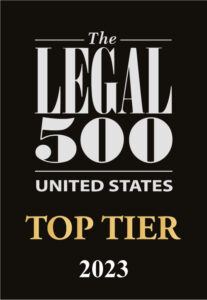In the waning days of its 2025 session, the Maryland Legislature passed the Budget Reconciliation and Financing Act, and Governor Wes Moore signed it into law.[1] This bill expands the sales tax base to include sales of various data and information technology and cloud computing services.[2] The sales tax rate on these new categories of taxable services is 3% as opposed to the prevailing state-wide tax rate of 6%. Imposition of the tax on sales of these new categories is effective starting July 1, 2025.
Putting aside the unworkable nature of keying the imposition to North American Industry Classification System codes and the obvious Internet Tax Freedom Act preemption of the imposition on web hosting and data storage, the Maryland Comptroller recently issued interim guidance that adds new, unwarranted complexity in the administration of multiple points of use (MPU) exemption certificates.
The new law takes effect July 1, and many taxpayers are scrambling to interpret and implement it. On June 10, the Comptroller issued a bulletin providing guidance on many of its more technical components,[3] which introduces a distinction between installment sales of and subscriptions to the newly taxable categories of services. This distinction has implications for managing MPU exemption certificates.
Included with the guidance are provisions that give buyers of these newly taxable services (if they plan on using the services in more than one jurisdiction) the option of providing the seller with an MPU exemption certificate.[4] Receipt by the seller of an MPU exemption certificate relieves the seller of the obligation to collect and remit Maryland sales tax on the sale, shifting the obligation of paying the use tax to the buyer.[5] The applicable tax the buyer must pay is determined using a reasonable method of apportionment of the use within Maryland as compared to all the locations of use of the service. Relevant headcount is a reasonable method of apportionment.[6] The presentation of an MPU exemption certificate by the buyer to the seller is optional.
In an installment sale context, there is one sale transaction that occurs at the time of contract execution. Buyers electing into the MPU process would need to supply only one certificate to the vendor that would cover all subsequent installment payments under the contract. Subscriptions are treated differently. Many of these newly taxable categories of computer-related services often are sold on a subscription basis. Under the guidance, each subscription payment is considered a separate sale requiring the issuance of a separate MPU exemption certificate for each subscription payment.[7] We told the Comptroller’s staff that requiring a separate MPU exemption certificate for each subscription payment is unnecessary. The staff responded saying that the rigidity of the process they’ve outlined in this context is under consideration and may be updated in subsequent guidance. (Vendors and buyers concerned about the practical implications of the MPU regime outlined are encouraged to contact the authors of this blog post for more details.)
The [...]
Continue Reading
read more

 Subscribe
Subscribe



